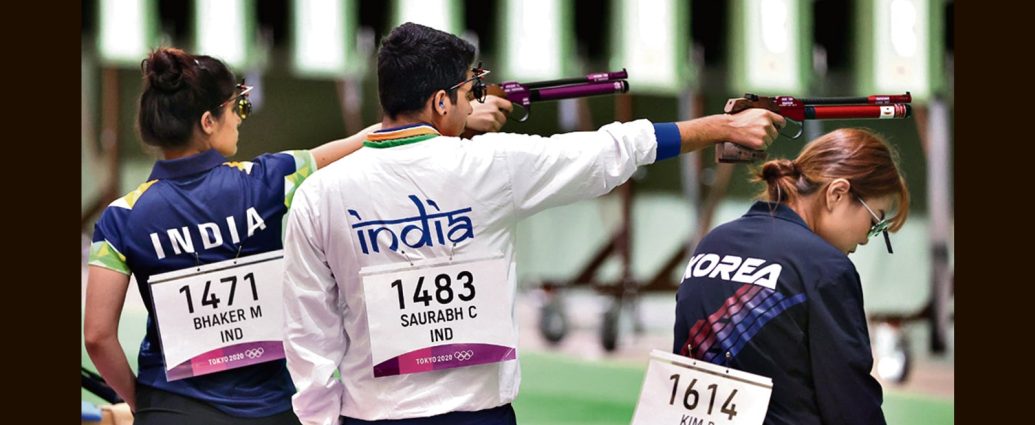It’s been a record-setting year for Indian shooters.
At the end of the Paris Olympics qualification stage, 20 have won quotas for the Games from a maximum of 24 possible quota slots per country. That’s the most won by any nation except the sport’s undisputed powerhouse, China, which has 22.
It’s two more than the sport’s other powerhouse, USA. And it is a new record for India, surpassing the 15 shooters who made it to the Tokyo Olympics in 2021.
This comes as no surprise to those within the fraternity, because Indian shooters have been doing brilliantly for two years, building capability patiently and purposefully towards Paris, and shrugging off the demoralising, medal-less showing in Tokyo.
That last bit must have taken serious work. Credit is due to the shooters, their coaches, and the National Rifle Association of India (NRAI). A debacle such as 2021 might have sunk the sport. Instead, they have rebounded with spirit.
Before the record quota-winning spree, there was the unprecedented medal haul at the Asian Games last year. Winning 22 medals (including seven golds) in Hangzhou was a statement of intent.
How did Indian shooting engineer this turnaround?
First, the federation did not get sucked into a negative spiral. NRAI found ways to admit that it could have done better, without shifting the blame onto the athletes, as many federations would have done.
NRAI and the coaches spoke in one voice, identifying the great disruption caused by the pandemic as the root of the problem. The lockdowns left most Indian shooters without competition time, training time or equipment. It forced many to improvise, building makeshift ranges at home. This took a toll on a generation of promising teenagers with limited experience of big events — almost all of whom then appeared at their first-ever Olympics, in Tokyo.
Second, the federation trusted the now-deep culture of shooting in the country, sparked by Abhinav Bindra’s 2008 Beijing gold, and developed and sustained by shooting academies set up by some of India’s finest former shooters. (Gagan Narang, for example, runs a clutch of high-performance centres across the country.)
It relied on committed state programmes such as those at the Madhya Pradesh State Shooting Academy in Bhopal, to keep the movement alive. Combined with easy accessibility to high-end guns and ammunition (a marked shift from the situation ahead of the 2016 Rio Games), what we have is a world-class ecosystem for the sport.
It’s an ecosystem that is growing too. The domestic scenario has reached a level of competitiveness that will see, for the first time, quota winners in this sport having to earn their place at the Olympics via selection trials, to be held in May.
When the Indian contingent eventually arrives at the picturesque, medieval town of Chateauroux (about 300 km from Paris), where the shooting events will be held, “they will be better prepared, better equipped, and much more familiar with the pressures of a big competition than ever before,” in the words of national rifle coach Suma Shirur.
I think the family of world-record holder and Asian Games gold-medallist Sift Kaur Samra said it well too. Their response when she quit an MBBS course to follow the sport was a slogan we can all get behind: “Don’t worry… Tum bas goli chalao! (Just take aim and fire).”
